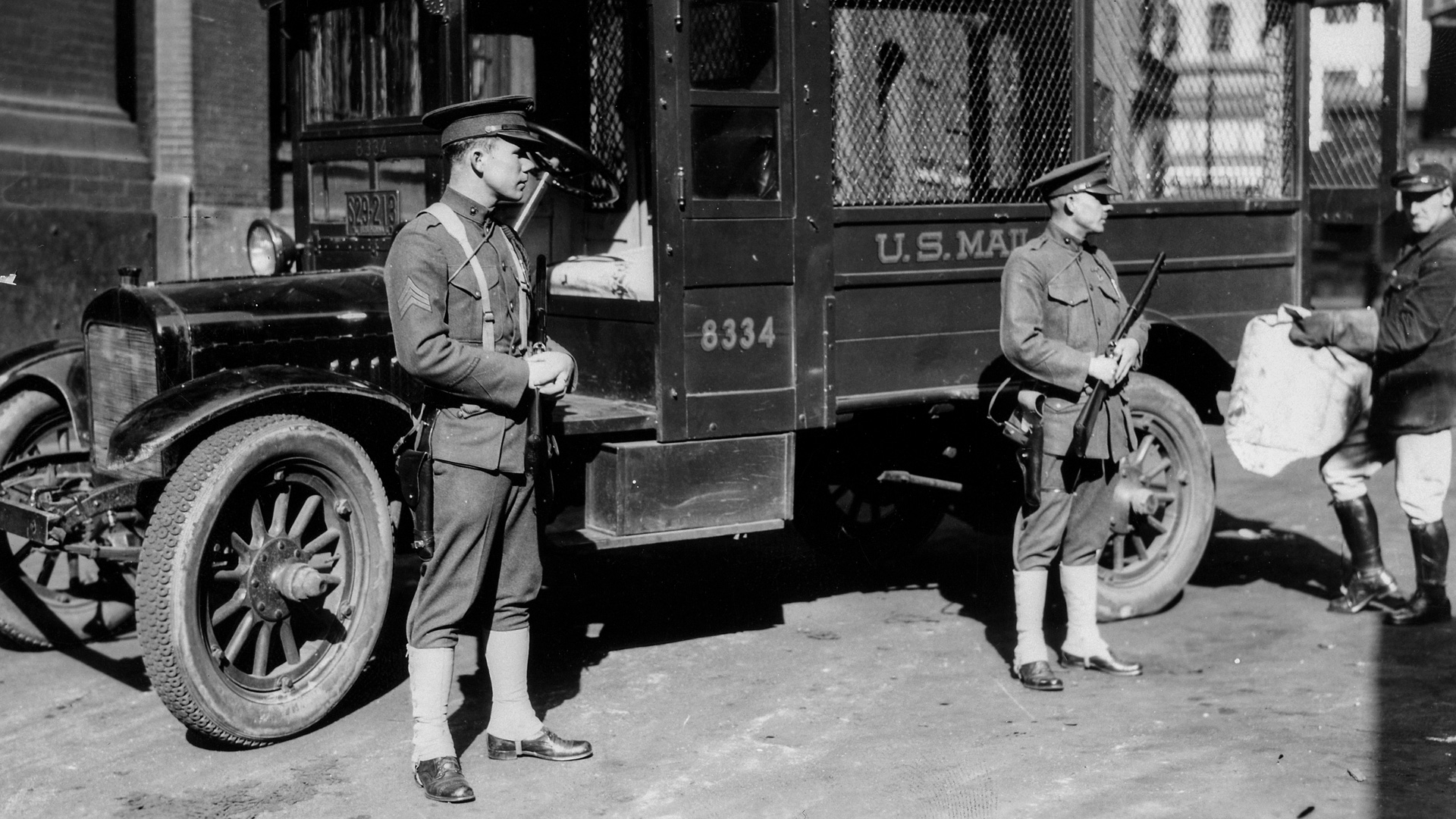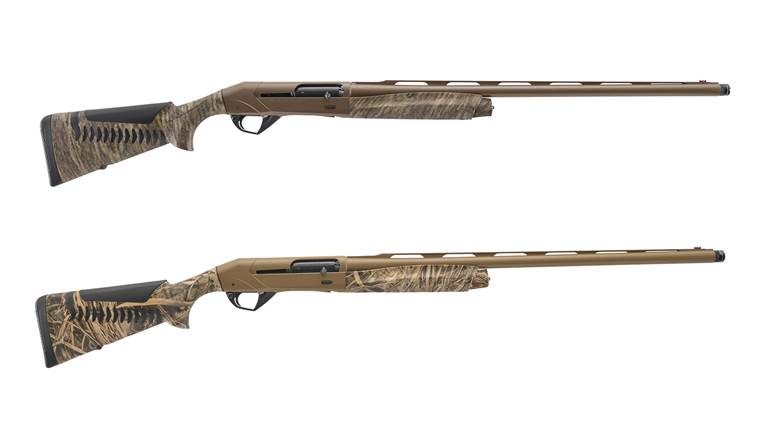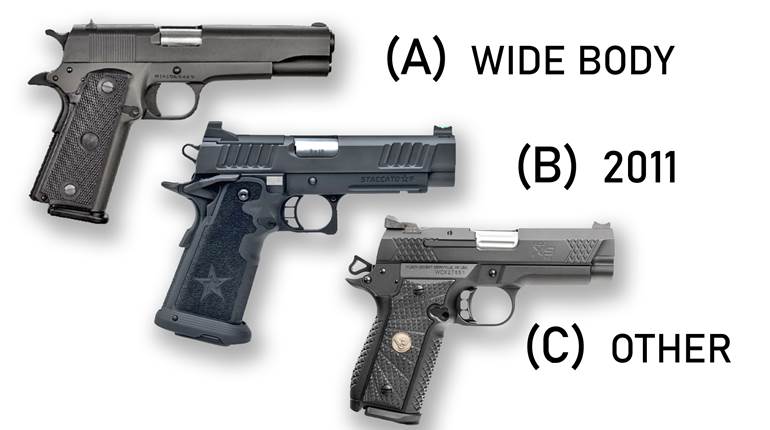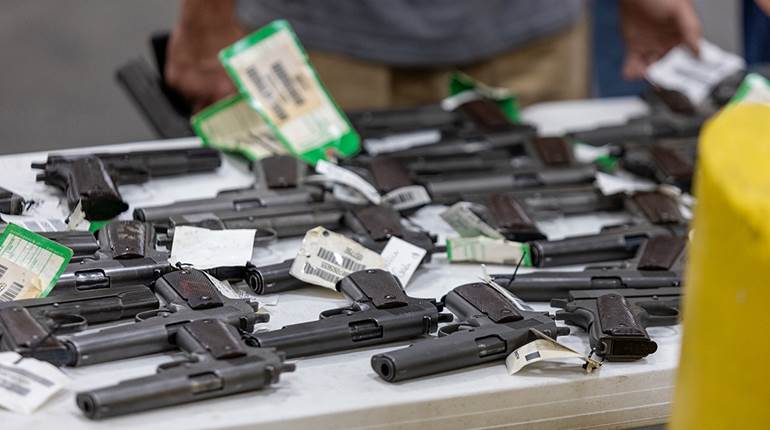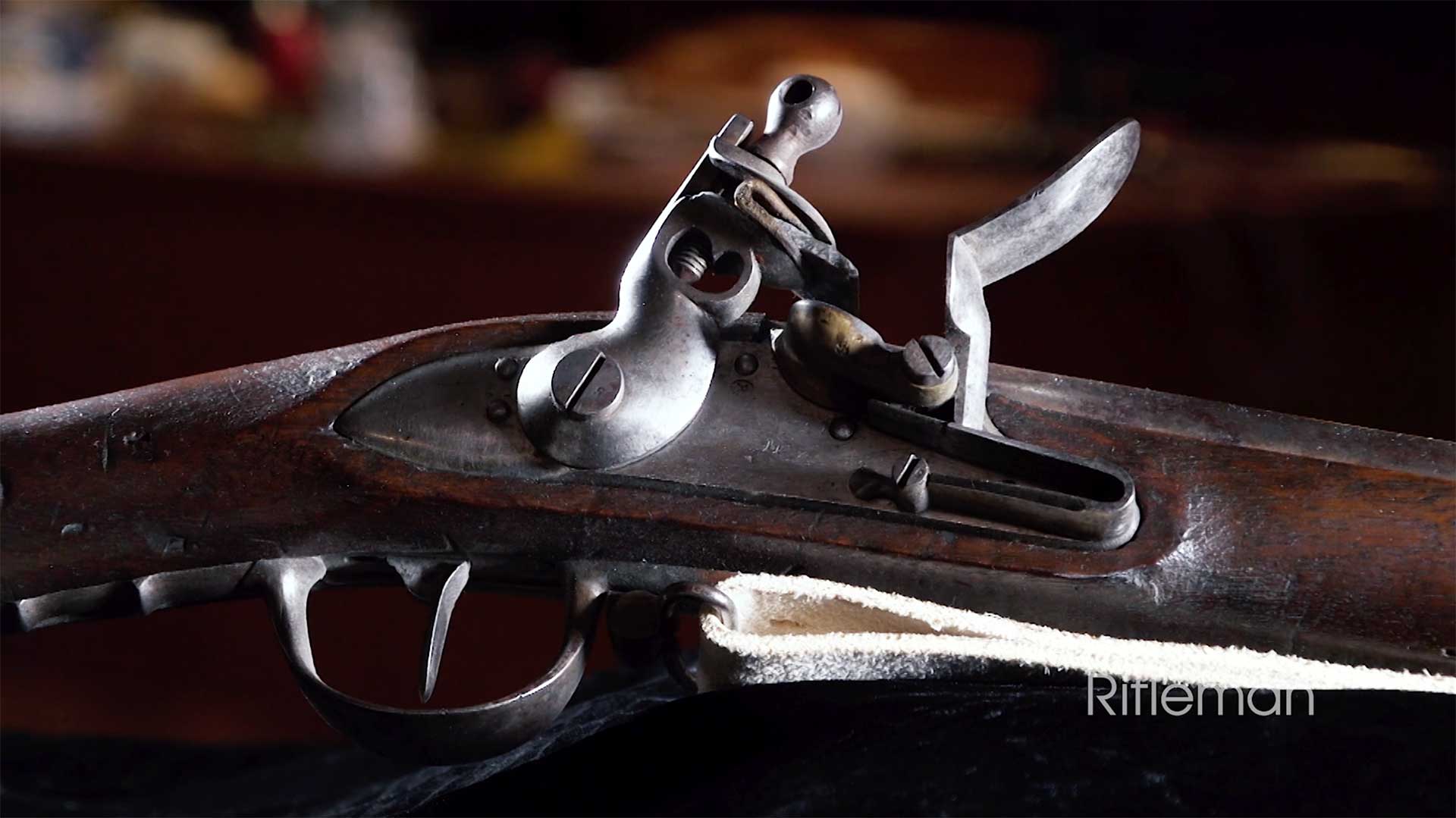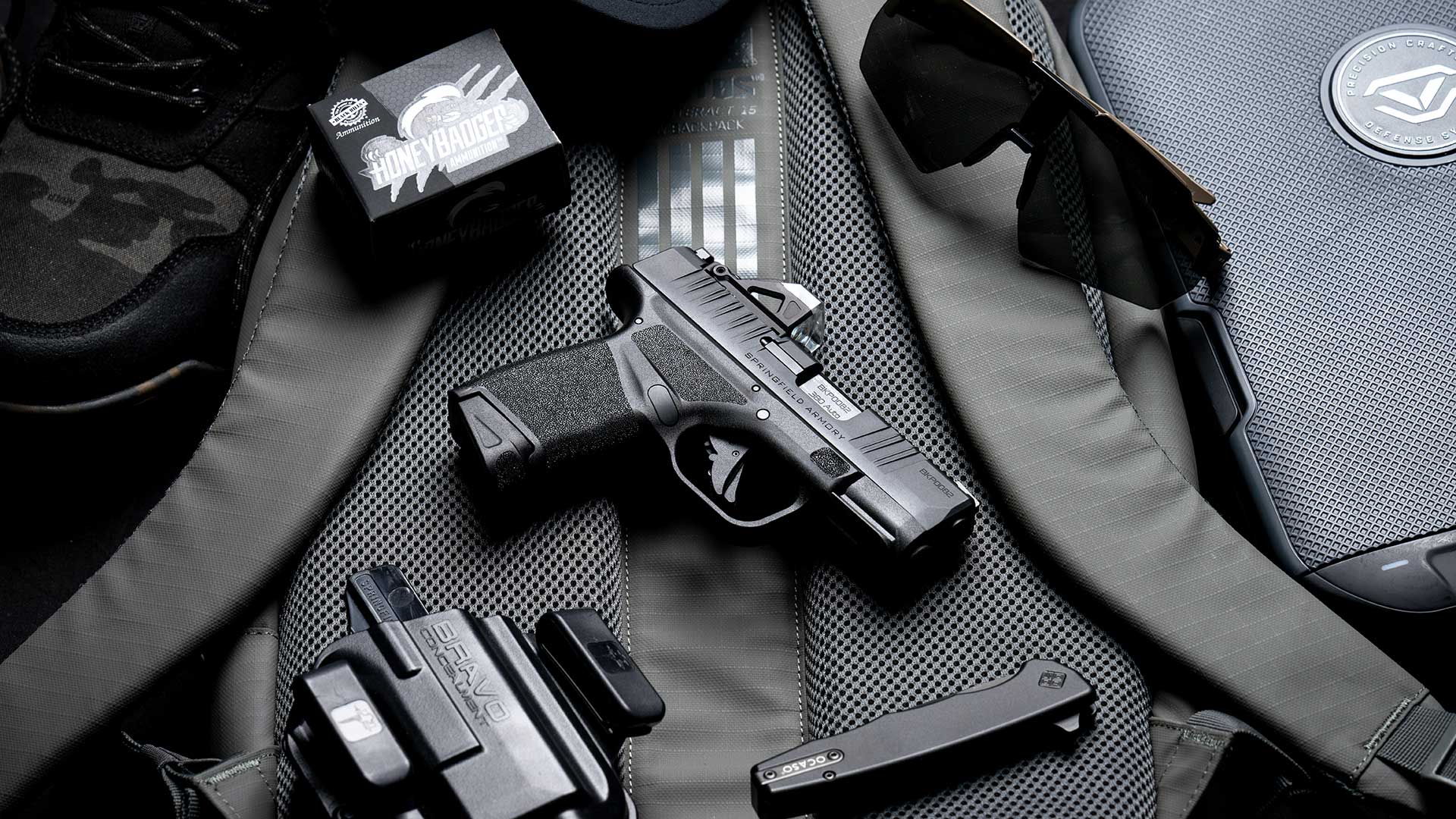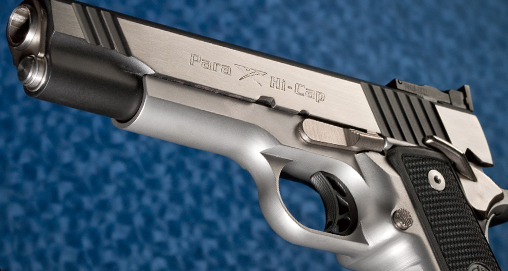
Although the prefix “para” is often taken to mean “related to,” it also can be construed as “beyond.” That second sense more appropriately characterizes the firearm company that today is based in Charlotte, N.C., and is known as Para USA, but that only 25 years ago was an upstart in an Ontario, Canada, suburb making a single, unique, non-firearm product. Para-Ordnance, as it was then known, was built on a partnership between two friends and on the idea that unique, innovative products would capture the imagination of shooters looking for something different. While its first foray into things that shoot was less than commercially successful, it nonetheless established the founders’ talents for combining innovative design with compelling marketing. By the second time around, that formula proved to be dead-on and aimed at no less a target than the reinvention of the greatest firearm in its category.
Reinventing A Masterpiece
The Para-Ordnance product line began inauspiciously enough in 1985 with the development of a non-firearm product called the Model 85 Dye Marking Tactical Machine Pistol. The black polymer “gun” bore a striking resemblance to a real MAC 10, but used light primer charges to shoot gelatinous die capsules without potentially injurious wads. When introduced to the market in 1987 an informative and, for the time, flashy brochure marketed the blowback-operated Model 85 on the strength of its realistic appearance and sound, 440 fps velocity, and even a 1,200-r.p.m. full-automatic firing mode. It suggested that the Model 85 would allow SWAT teams to train in tactics, foresters to mark trees for cutting, and stunt men and actors to create the impression of a real gunfight.
The Model 85 was the brainchild of engineer Ted Szabo, a 20-year veteran moldmaker who appreciated firearms not only for their functionality, but for the freedom they represented—his family had fled their native Hungary to avoid Communist oppression. What’s more, Szabo had a knack for understanding how firearms worked along with the rare talent and determination to see their shortcomings as an opportunity to improve them for greater functionality. Szabo’s partner and friend, Thanos Polyzos, the son of Greek immigrants and an attorney practicing criminal law, had not only an appreciation for firearms but a keen sense of the market forces that drove their sales. He was also comfortable with regulatory paperwork such as that required by the U.S. Bureau of Alcohol, Tobacco & Firearms.
Both men knew that the Model 85—as unique, well-engineered and, doubtless, ahead of its time as it was—simply didn’t have mass market appeal. Fortunately, a confluence of circumstances created an opportunity for far greater success just as Model 85 sales dissipated. The new idea had been in the back of Szabo’s mind since the early 1970s. An admirer of John Browning’s classic M1911 pistol, he felt that its magazine capacity of seven rounds was unnecessarily limited, requiring too many changes—especially during competitions, which were gaining in popularity at the time. In addition, the U.S. military had for several years been considering a replacement for the long-serving M1911 partly for the same reason—that of capacity, or “firepower.” The Army’s selection of the Beretta M9 in 1985 marked the midpoint in the popular gun press’ exploitation of the so-called “Wonder Nine” wars that endlessly debated the merits of a defensive or military pistol containing a dozen or more 9 mm Luger cartridges versus one containing fewer, larger-caliber cartridges.
Most people approached the argument from the vantage point of which existing design merited the greater favor; Szabo came at it from the idea of blending the best attributes of each platform and set about to create a better mousetrap. By the 1988 Shooting, Hunting, Outdoor Trade Show, he had completed the solution: a higher-capacity, extra-wide M1911-style frame and double-stack magazine kit that could be retrofitted to the slide assembly of an existing single-stack gun. Polyzos confidently announced the gun in a letter to then American Rifleman Technical Editor Pete Dickey, whose breadth of experience made him difficult to impress.
The kit’s features, however, were remarkable. The frame was a precision, light alloy investment casting that featured full-length rails, a thicker section around the slide stop pin hole, a cast-in plunger tube and a beveled magazine well—all of which added nothing to the weight of a complete gun and resulted in only a 1/8-inch thicker grip area including stocks. The magazine was a 13-round double-stack unit made of 0.028-inch-thick heat-treated steel and had an easily removable floorplate for cleaning and maintenance.
The opening words in the American Rifleman “Dope Bag” review of the “Para-Ordnance 13-Shot .45 Kit,” stated, “For two years a prototype of Para-Ordnance’s aluminum frame for Colt’s Government Model pistol has been a focal point at gun shows. It is now on the market. Its great attraction is its 13-shot magazine capacity (plus one in the chamber) that almost doubles the 7+1 capacity of the standard .45 ACP model. The many shooters who prefer .45s yet appreciate the greater capacities of 9 mms are the obvious sales targets, and that potential market is sizeable.” It took a few years before the first complete pistol from Para-Ordnance appeared in the “Dope Bag,” which summed up the new gun by stating, “The P14-45, then, lets the less adventurous soul who doesn’t want to go on a scavenger hunt for parts enjoy the big 13-round capacity of the Para-Ordnance frame, a unit that has become popular both for defense and competition purposes.” With the P14 45’s release, Para-Ordnance had become a full-fledged firearm manufacturer.
Expanding The Brand
In the intervening years, the Para kit, and later, complete pistols sold briskly, and the company expanded its line to include dozens of M1911-based models including double-stack guns and, ironically, single-stack guns in all manner of sizes and with all manner of finishes and enhancements. In 1991, Polyzos shrewdly enlisted the marksmanship and showmanship skills of competitive pistol shooter Todd Jarrett, who became the face of Para pistols, winning countless titles and performing numerous feats designed to demonstrate the brand’s inherent quality. To date Para USA claims more than 100 championships including nine USPSA National titles and the IPSC World title.
As Polyzos was busy expanding the business and cementing Para’s reputation among shooters, gunwriters, and even some law enforcement officers, Szabo was turning out even more innovations for the famous Browning platform. In 1998, the company unveiled the Light Double Action (LDA) trigger system for its M1911-based pistols. With it, shooters finally could benefit from the familiarity of the M1911 platform without having to carry it in the “cocked and locked” condition that made some uncomfortable. The top-pivoted, smooth-faced trigger, which initially had a blade that appeared too slender in its fore-to-aft dimension, has been redesigned to be thicker in that regard and to have a serrated face. But the LDA’s real beauty was beneath the surface. It offered a long, deliberate pull stroke with a relatively light letoff of approximately 6 pounds and was engineered with several internal safety features. The LDA represented Szabo’s and Polyzos’ finest hour as even Colt had been unable to produce and market a commercially successful double-action version of Browning’s masterpiece during the nearly 90 years since its development.
In 2003, Szabo launched his final improvement to the M1911 platform: the Para Power Extractor, a multipiece internal unit that fit into the M1911 slide assembly in the way that Browning’s original extractor had, but that was articulated by means of four separate parts including a small coil spring. The Power Extractor not only offered greater purchase on the case rim, but alleviated the necessity of a traditional extractor’s having to be precisely fitted to the gun. The company even offered a service of modifying conventional M1911 frames to accept the device. Today it is found across the Para line of pistols, be they single- or double-stack, full-size or compact.
Last year Para caught even the most astute industry observers off-guard by introducing the Para Tactical Target Rifle, or TTR. The company’s first foray into long guns, the TTR is actually the brainchild of another firearm innovator, Allan Zitta, whose Z-M Weapons company developed the Delayed Impingement Gas System (DIGS) used in its LR-series AR-style rifles. Para USA now licenses the design, which can best be described as a combination of piston and direct-impingement systems. The rifle is a perfect fit for the Para paradigm in that it, too, was earlier available as a kit for retrofitting to a standard AR lower and because it exploits another of the most established platforms of its kind: Eugene Stoner’s ArmaLite rifle. But the TTR’s features push the AR into a different category altogether. The U-shaped channel inside its gas block results in lower port pressures, and the system’s gas handling makes for a cleaner-running rifle with less carbon fouling and heat buildup in critical action parts such as the bolt. Other major benefits to the TTR’s DIGS system include the lack of a buttstock-mounted buffer system, which means the rifle can incorporate a true side-folding stock that is hinged just behind the pistol grip.
Coming To America
Reinvention is a consistent theme in the Para story. And despite the company’s continuing product innovations, its most significant defining moment was its recent move to Pineville, N.C., a small suburb of Charlotte in America’s traditional South. According to Polyzos, despite the years of Para’s successes and the many satisfied American firearm consumers, some potential buyers simply couldn’t get past the pistols’ Canadian origin. In addition, he believed that the M1911 was, at its core, an American product. He also hoped that the TTR had some potential as a competitor in future U.S. military rifle trials. So, in 2007, Polyzos began to evaluate several potential sites in the United States to which he could move the company. Among them North Carolina promised to be an ideal location with good access to transportation, a favorable business climate and, not least, a culture known for its hard work ethic. A bonus came in the form of prospective employees who came to the company with previous firearm-building experience. The company offered to transfer any of its Canadian workers who wished to make the move, and several key production personnel with invaluable experience accepted, which has contributed to the continuity of production generally and to quality control particularly. But the infusion of new blood into an established institution has proven to be the exact catalyst Para executives were looking for to advance the company to the next level. Many of Para USA’s newest recruits are skilled workers with an unusual degree of previous experience in the realm of gunmaking, fitting and finishing.
Among the staff of tool-and-die makers who transferred from Canada on work permits is Derek Beattie, who has been with Para for seven years and has 17 years’ experience as a moldmaker. Beattie runs a cubicle-size wire Electrical Discharge Machining (EDM) center that cuts the molds for the Metal Injection Molding (MIM) machine, which then forms metal or plastic into the specific shapes of small parts such as skeletonized triggers. He is quick to point out that the moldmaker’s trade is essential not only to producing the necessary parts to build Para firearms, but to the fundamental understanding of the intricacies of how such parts must be designed and manufactured. “Both [Ted Szabo] and his dad were moldmakers and very technical people, but they knew that they had to leave up to the moldmaker how to come up with the solution. That kind of understanding of the process leads to innovative thinking.”
Seven-year Para veteran Neil Sevel makes a case for the contingent of workers who made the move to America, saying, “It helps us in the transition and the training. The old quality is still here—we have a proven way.” Acknowledging his new coworkers, he said, “The guys we have here are all gun people—enthusiasts. A lot of them are working for a living doing the hobby they enjoy.”
Many within the management team have a high degree of hands-on experience. One example is Ben Cook, the company’s executive director for strategic development and customer relations. Cook was trained by a former U.S. Army Marksmanship Unit armorer, has been a part-time gunsmith, has built his own M1911-style pistols and spent the better part of four years training USMC instructors in close-quarters shooting techniques.
Cook and other managers can often be found on the factory floor where they have an easy rapport with workers such as Louie Ely, a stout American with a kind demeanor but an all-business attitude when he has a tool in his hand. In the assembly area, he skillfully places fire-control parts into frames, testing the triggers and hand-setting their leaf springs completely by feel. “I built rifles before I came here,” he says matter-of-factly. Nearby is Jeff Abernathy, a second-generation gunsmith who heeded Para’s call to work at the new factory. Abernathy worked in his father’s Mount Holly, N.C., gunshop where he “cut his teeth” on all kinds of firearms before deciding, about eight years ago, that he would concentrate on M1911-style pistols for IDPA and IPSC competition. That’s when he caught Para pro shooter Todd Jarrett’s attention, and before Abernathy knew it he was elbow-deep in components in the new Para factory. “I want each gun to look the best it possibly can with 100 percent functionality,” said Abernathy, adding, “Quality is always the main priority.”
Moving Beyond Expectations
Even as Para USA pistols near completion, quality control measures are stringently enforced. Ben Fritz, who has more than 30 years of manufacturing experience, including technical design, heads a cadre of workers he described as “empowered to fail a gun at any point in the build process.” At the indoor test range the quality control protocol includes a firing test with one proof round and 11 standard rounds of ammunition. The first magazine is fired for accuracy and the second for function. Throughout the process, but especially at the end, the team checks each gun for fit and finish, function and accuracy. Fritz documents any failures, looks for trends, analyzes them and develops solutions. “We want to address every flaw. It’s a quest for perfection and the only people we’re looking for approval from is our customers.”
“Ted Szabo was a genius, and the reason Thanos moved to the USA is because he knew the 1911 was an American gun. He wanted to take Para to the next level,” said Fritz. Cook couldn’t agree more although he is hesitant to reveal specifics about new developments in firearms, both pistols and rifles, the company has on the drawing board. In fact, some are already in shootable, prototype form and promise to be significant departures from the company’s signature product lines. He also said the company will institute a number of specific changes to its products in coming months, hinting at such applications as nitride and tungsten DLC coatings to replace the sprayed-on coatings now in use as well as premium features such as tool steel fire-control components for certain models. In an entirely different type of project, Para USA has also inked a deal with the Single Action Shooting Society to produce an official Wild Bunch M1911 pistol.
“Para is breaking-in as an organization just as a new gun breaks-in,” Cook said. “Relocation forced us to build a new organization, and now we’re hitting our stride.”
Ted Szabo did not live to see Para USA become an American company. Before his death in 2007 at the age of 60, Szabo is reported to have said of his accomplishments regarding Para’s enhancements to John Browning’s masterpiece, “I have always wanted to pick up where his design left off and carry the technology forward to the next level.”
He clearly accomplished that goal, and in the same fashion his friend and original partner, Thanos Polyzos, continues to guide the able force of Para USA workers on a course aimed at convincing American gun buyers that Para USA is not only all about innovating classic designs, but intends to go well beyond them into a future all its own.



